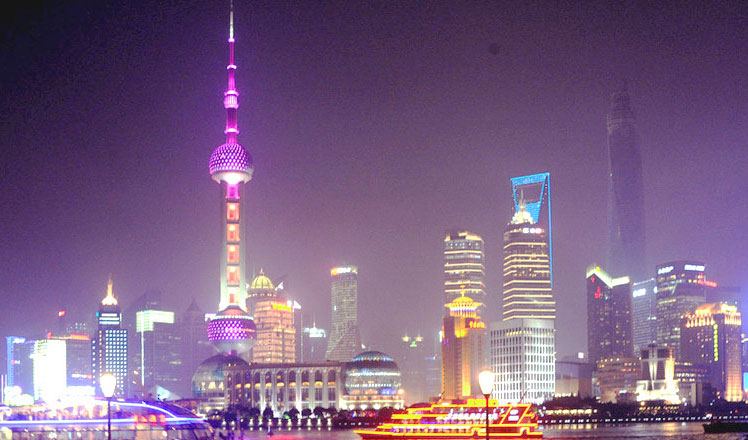Latest Bourne film is dizzying for some Chinese moviegoers
Updated: 2016-08-31 05:46
By AMY HE in New York
|
||||||||
The complaints were more like ones that might be expected from people who took a wild ride on a roller coaster: dizzy and nauseous. But they came from people seated in movie theaters in China watching the latest 3-D version of the film Jason Bourne.
Last week, Chinese social media was full of the complaints from moviegoers about the latest Bourne sequel that was released in China on Aug 23.
"There were a line of people throwing up in the restroom of the cinema I went to yesterday…I'm not exaggerating," one moviegoer wrote under a post about the film on China's social networking site Weibo, according to the website Quartz. In Beijing, residents in the Chaoyang district organized a protest against the 3-D screening, according to the London newspaper The Independent.
"This is just a wild story," about the quality of Universal Studio's 3-D version of the film, said Marc Ganis, president of Jiaflix, which helps US studios distribute films in China. "Maybe something was rushed and they had to get it in 3-D, because they're too good of a shop, too good of a company. There has to be some other reason why this happened." The apparent reason: The film's director Paul Greengrass shot several sequences using a handheld camera and then made rapid cuts to create a fast-paced, hectic edit, combined with 3-D effects. But it was too hectic for many moviegoers.
The movie has mostly screened in 2-D format in releases around the world including in the US, but was screened in 3-D in China, most likely to cash in on demand for the format, where ticket prices for 3-D showings can often bring 30 percent revenue than 2-D ones, benefiting studios and their distributors.
3-D is so popular in China that cinema chain Wanda said it will build 4,000 3-D screens over the next four years.
"China is the largest 3-D market by revenue in the world now, beating the US, and while some other markets have as high a penetration of 3-D screens as China, they are significantly smaller," said David Hancock, director of film and cinema at IHS Technology.
About 90 percent of theaters in China are equipped with 3-D technology compared with an average of 40-45 percent in the world, and "that is because consumers clearly favor the 3-D element on films," he said.
Stanley Rosen, director of the East Asian Studies Center at the University of Southern California, said that Chinese audiences are going for 3-D because those effects can't be duplicated on pirated DVDs or streaming versions. Because there is not much of a home video market, studios draw revenue from theatrical releases, amplifying the interest in 3-D revenue.
"But when you take a 2-D film like the latest Bourne film and artificially turn it into a 3-D film just to increase box office revenue, particularly when a fair amount of the film is shot with hand-held cameras, you're going to get a hybrid that doesn't work well," he said.
However, if the conversion on Bourne was not very well done — [and] I have no first-hand knowledge of that — this could be a sign that studios are starting to exploit the situation and that could be a worry for the 3-D format," he said.
In response to complaints about the movie, Universal has said that it will increase the number of 2-D screenings of the film in Beijing, where only eight of 149 cinemas showed the movie in that format. Moviegoers had also complained about the relatively small number of 2-D screenings available in their cities.
And despite the complaints, the movie has made over $49 million so far since being released, bringing in more in China than the four other Jason Bourne movies combined.
amyhe@chinadailyusa.com
- One dead, three wounded in blast at Chinese embassy in Kyrgyzstan
- Tainted food sickens 37 Buddhist monks, 2 helpers in Cambodia
- Hillary Clinton outlines mental health plan
- Colorful parade at Notting Hill Carnival
- Canadian prime minister leaves for China for visit, G20 summit
- Erdogan says Turkey to fight IS, Syrian Kurdish militants

 Top 10 wealthiest countries in the world
Top 10 wealthiest countries in the world
 Princlings go to school
Princlings go to school
 Chinese painters capture beauty of Hangzhou
Chinese painters capture beauty of Hangzhou
 1,150-meter-long 'floating bridge' created
1,150-meter-long 'floating bridge' created
 Take a sip of wine at the glass skywalk in Hunan
Take a sip of wine at the glass skywalk in Hunan
 Groom and bride cycle their way to wedding
Groom and bride cycle their way to wedding
 The world in photos: Aug 22- Aug 28
The world in photos: Aug 22- Aug 28
 Daily life in Hangzhou, host city of 11th G20 summit
Daily life in Hangzhou, host city of 11th G20 summit
Most Viewed
Editor's Picks

|

|

|

|

|

|
Today's Top News
Trump outlines anti-terror plan, proposing extreme vetting for immigrants
Phelps puts spotlight on cupping
US launches airstrikes against IS targets in Libya's Sirte
Ministry slams US-Korean THAAD deployment
Two police officers shot at protest in Dallas
Abe's blame game reveals his policies failing to get results
Ending wildlife trafficking must be policy priority in Asia
Effects of supply-side reform take time to be seen
US Weekly

|

|








